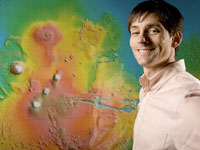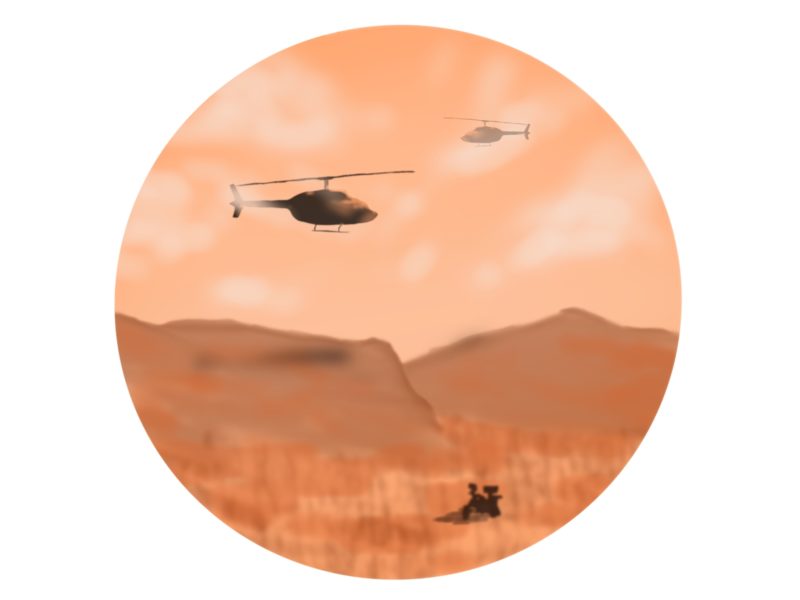Earth, Energy, and the Environment, these are the main goals of the Colorado School of Mines. So, what was I doing sitting in a small office in the Green Center talking about Mars with one of the school’s leading planetary scientists? Jeff Andrews-Hanna is one of the leading experts in the fields of Martian tectonics and I found myself there to pick his mind about his current research into the formation of what could possibly be the largest impact crater in the observable solar system.
One of the biggest mysteries about our red neighbor is that it has a large elevation dichotomy, the Northern plains have significantly lower elevation that the Southern mountains and if you look at an elevation map of the planet, the change happens over a very short distance. Of course, such an interesting feature has been the focus of a great many theories since it was discovered, and as in inevitable, a great deal of controversy. The idea of a large impact was thrown out near the beginning. Andrews-Hanna states, “The idea [of a large impact] has been rejected, but now based on work that I have done as well as other, it is favored.”
“I never believed in the impact hypothesis,” says a smiling Andrews-Hanna, who is leading the current investigation into just the opposite. He had been working on a project where he removed the Tharsis Montes from the picture when he noticed that the dichotomy seemed to form an elliptical crater. He says “I didn’t touch it for about a week, the idea was cool, though so I found myself looking back.” What he found surprised him and he began work on figuring out what could have created this big of an impact. “It was believed that the Hellas crater was the largest an impact could get without breaking the crust too much, still nobody had really looked into that.” Luckily for the future of Martian tectonics, another lab was working on the same problem and they began to synthesize their data and models to come up with a viable new hypothesis.
When asked about what made the study of Mars so important to the sciences here on Earth, Andrews-Hanna responded that “[Mars] occupies a unique niche in the solar system, Mars is in the middle ground, it is more active than the Moon and Mercury, but less active than Venus and the Earth. By looking at Mars we can understand what happened when the solar system was young, but still understand how more modern processes affect a planet,” which in a period of planetary change may help us understand more about our own planet. “I try to identify those fundamental questions that pertain to all the planets,” and Andrews-Hanna notes with Mars, this is easy with the new data that is coming from the planet. “In the last few years, we have had a huge increase in the data quality from Mars and we are finding new cool things.” These findings will continue to be a source of new research for the school and a step towards embodying space into the objectives of the school.
Andrews-Hanna concludes, “Now we are [in Martian theory] where we were in the 70’s with the Earth, many ideas are being tested and… luckily, all of the data is paid for by taxpayers and is available to everyone, it is very accessible in that sense.” The revolution in space sciences is about to take off, hopefully with Andrews-Hanna in the forefront. Any advice for how to advance one’s knowledge and potential in space sciences was given in his back story, “I found space interesting, I took my first class on astronomy and was hooked. I found the Earth was more beautiful than I had thought and soon realized the other [planets] were beautiful as well.”



'Mines embraces the mysteries of Martian tectonics' has no comments
Be the first to comment this post!